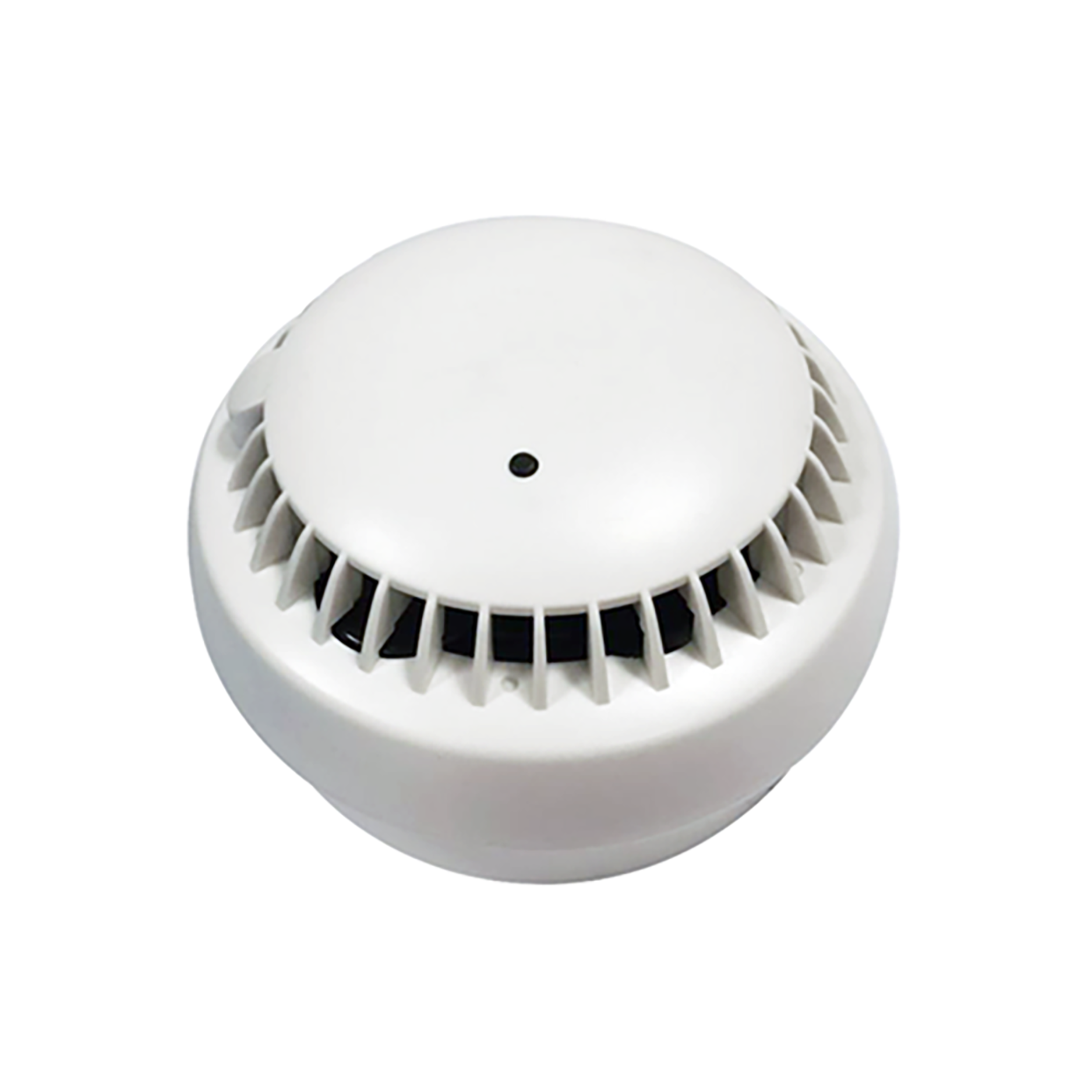A smoke alarm is a safety device used to detect and alert the presence of smoke. It is widely used in homes, offices, commercial buildings, and public spaces to detect fires at an early stage, providing valuable escape time and reducing casualties and property damage.
There are several types of smoke alarms available in the market:
1.Photoelectric Smoke Alarm: This type of alarm uses a photoelectric sensor to detect smoke particles. When smoke enters the sensing chamber, the light beam is scattered, triggering the alarm
2.Ionization Smoke Alarm: These alarms detect smoke by ionizing air between two electrodes. When smoke enters the alarm, the conductivity of ionized air changes, triggering the alarm.
3.Dual-Sensor Smoke Alarm: These alarms combine the advantages of photoelectric and ionization alarms, providing higher detection accuracy and lower false alarm rates.
4.Heat-Activated Smoke Alarm: This type of alarm uses a heat-sensitive resistor to detect temperature changes. When the temperature exceeds a predetermined threshold, the alarm sounds.
The craftsmanship of smoke alarms involves sensitivity, response time, and false alarm rate. A good smoke alarm should have the following characteristics:
1.High Sensitivity: It should be able to detect even small smoke particles and identify potential fires at an early stage.
2.Quick Response: When smoke is detected, the alarm should sound promptly and loudly, grabbing people’s attention.
3.Low False Alarm Rate: It should effectively differentiate between genuine smoke from fires and common sources of interference, minimizing false alarms.
4.Longevity: It should have a long battery life or a reliable power supply to ensure continuous and stable operation.
Smoke alarms have widespread applications in everyday life. They are installed in bedrooms, living rooms, kitchens, hallways, and other areas to monitor the risk of fires. When smoke is detected, the alarm emits sound or light signals, alerting people to take necessary evacuation measures and notifying authorities promptly.
The future development trends of smoke alarms include:
1.Smart Technology: With the advancement of the Internet of Things (IoT) and artificial intelligence (AI), smoke alarms will become increasingly intelligent. They can be connected to other smart devices such as smartphones and home security systems, enabling remote monitoring and control.
2.Multifunctionality: Future smoke alarms may integrate additional features such as gas leak detection, temperature and humidity monitoring, providing comprehensive safety protection.
3.Improved Detection Accuracy: Researchers will continue to improve sensor technologies to enhance detection accuracy and response time while reducing false alarm rates.
4.Visual Alerts: In addition to sound and light signals, future smoke alarms may incorporate visual alerts such as LCD screens or projection technology, providing users with more intuitive alarm information.
When evaluating the quality of smoke alarms, the following criteria can be considered:
1.Safety Performance: A good smoke alarm should have high sensitivity, quick response, and low false alarm rates, enabling timely and accurate detection of fire risks.
2.Quality and Reliability: Choose products from reputable brands that have been certified to ensure their quality and reliability for long-term operation.
3.Ease of Use: Smoke alarms should be easy to install and operate, with clear user interfaces and indication features, making them user-friendly and easy to maintain.
4.Price and Value: Consider the performance, quality, and price of the smoke alarm to ensure a reasonable balance between cost and benefits.
In conclusion, smoke alarms are essential safety devices that play a critical role in fire prevention and evacuation. With advancing technology, smoke alarms will become more intelligent and multifunctional, offering comprehensive safety protection. When choosing a smoke alarm that suits your needs, it is important to consider factors such as safety performance, quality and reliability, ease of use, and price-value ratio.
Post time: Jun-13-2023






